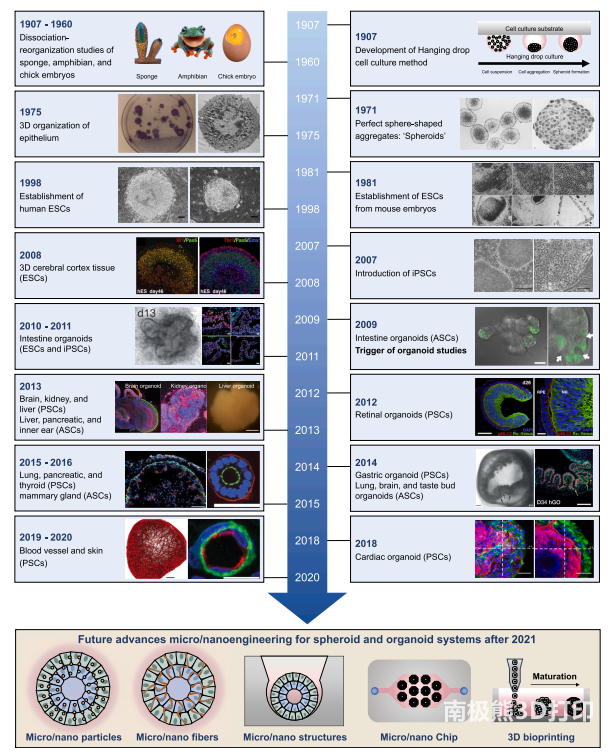Traditional 2D monolayer cell cultures lack physiological relevance, are difficult to model key features of organ function, and have poor predictive power. To solve this dilemma, scientists turned to 3D cell culture. Among them, stem cell-based 3D spheroids and organoids help guide the specific functions, growth and occurrence of stem cells, which can nearly physiologically simulate cell-cell and cell-matrix interactions, showing great promise in the field of tissue repair and regeneration. application potential.
Here, Jangho Kim’s team from Chonnam National University, South Korea, reviewed many therapeutic strategies of 3D stem cell spheroids and organoids in recent years, including engineering technologies for tissue repair and regeneration. The review is entitled “Therapeutic strategies of three-dimensional stem cell spheroids and “organoids for tissue repair and regeneration” was published in Bioactive Materials. First, the authors present the timeline and historical origins of 3D cell culture development (Figure 1). Then, the engineering construction methods of traditional 2D stem cell culture, stem cell spheroid and organoid culture, and their research progress in tissue repair and regenerative therapy are introduced in detail. Finally, the authors point out that improving the survival rate and therapeutic efficiency of stem cell transplantation is still an urgent problem to be overcome in improving the treatment of 3D stem cells. Based on the current research status, the author believes that the use of advanced engineering technology is expected to break through the limitations of stem cell therapy, improve the yield, size and maturity of cell spheroids and organoids, and maximize the effect of stem cell tissue repair and regeneration therapy, which can be described as challenges and opportunities. coexist.

Figure 1 Historical origin and development timeline of 3D cell culture
Article interpretation
1. Engineering construction methods for 3D stem cell spheroid culture include hanging drop method, well plate method, spin method, and research methods based on hydrogel, magnet, and microfluidic technology. The research of stem cell spheres in tissue repair and regeneration includes bone tissue, cartilage tissue, nerve tissue,
Blood vessel
repair and regeneration of teeth, skin, etc.
2. The author lists the engineering technologies for stem cell organoid maturation in detail, including microwell arrays, microfluidics,
biology
Various research methods such as reactors and hydrogels are introduced, and the research progress of various organoids derived from stem cells in therapy is introduced.
3. Stem cell spheroids can promote tissue or organ regeneration by improving the differentiation and paracrine action of stem cells without the need for fully differentiated organ characteristics, while organoids have fully differentiated organ characteristics. In other words, spheroids are mainly used for tissue regeneration, while organoids are mainly used for organ function recovery.
Article Source:
https://doi.org/10.1016/j.bioactmat.2022.03.039
(responsible editor: admin)


0 Comments for “Tissue repair and regeneration strategies based on 3D stem cell spheroids and organoids at Chonnam National University, South Korea”